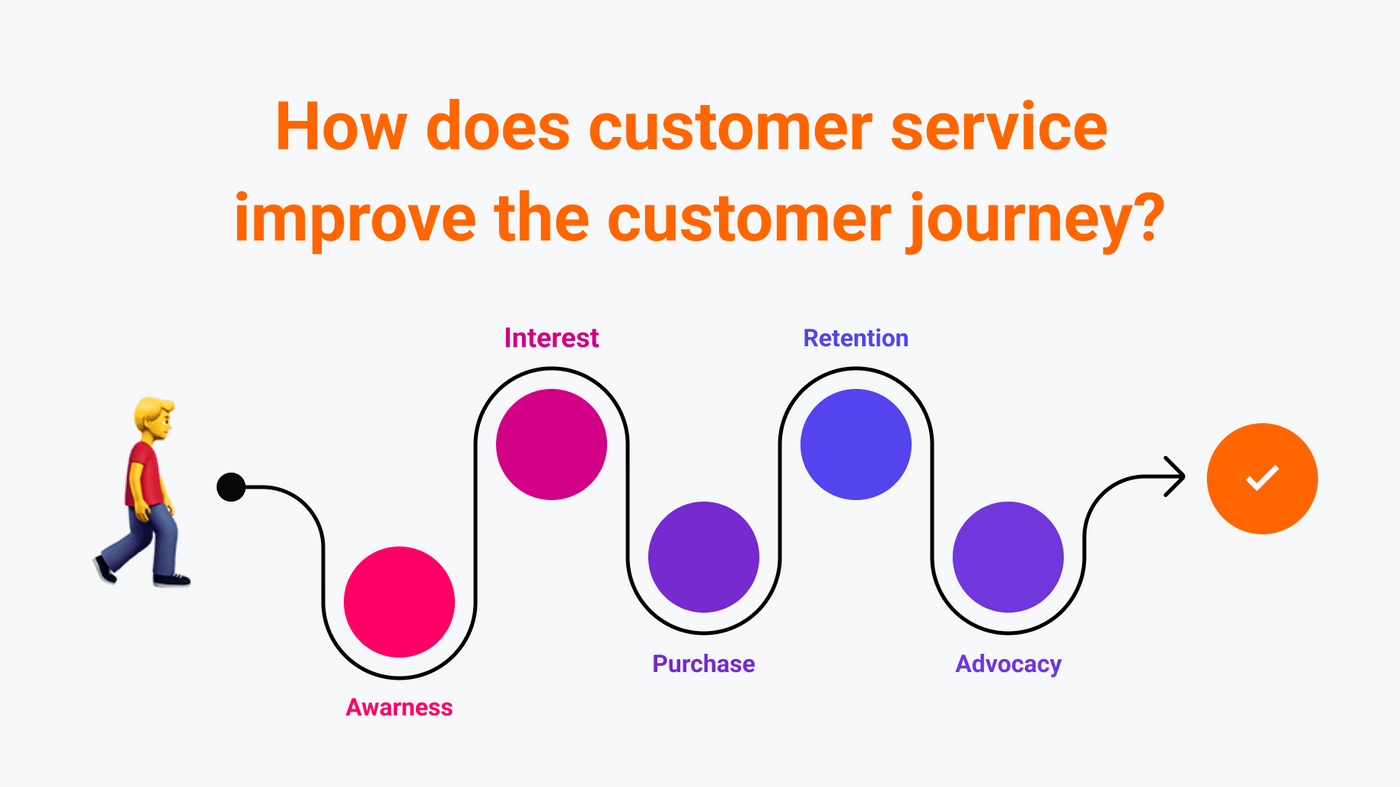Chatbot
Conversational Design - 10 Important Facts!
Discover the basics and best practices of conversational design to make technology more human-like and intuitive. Learn principles, guidelines, and the design process in our comprehensive article.
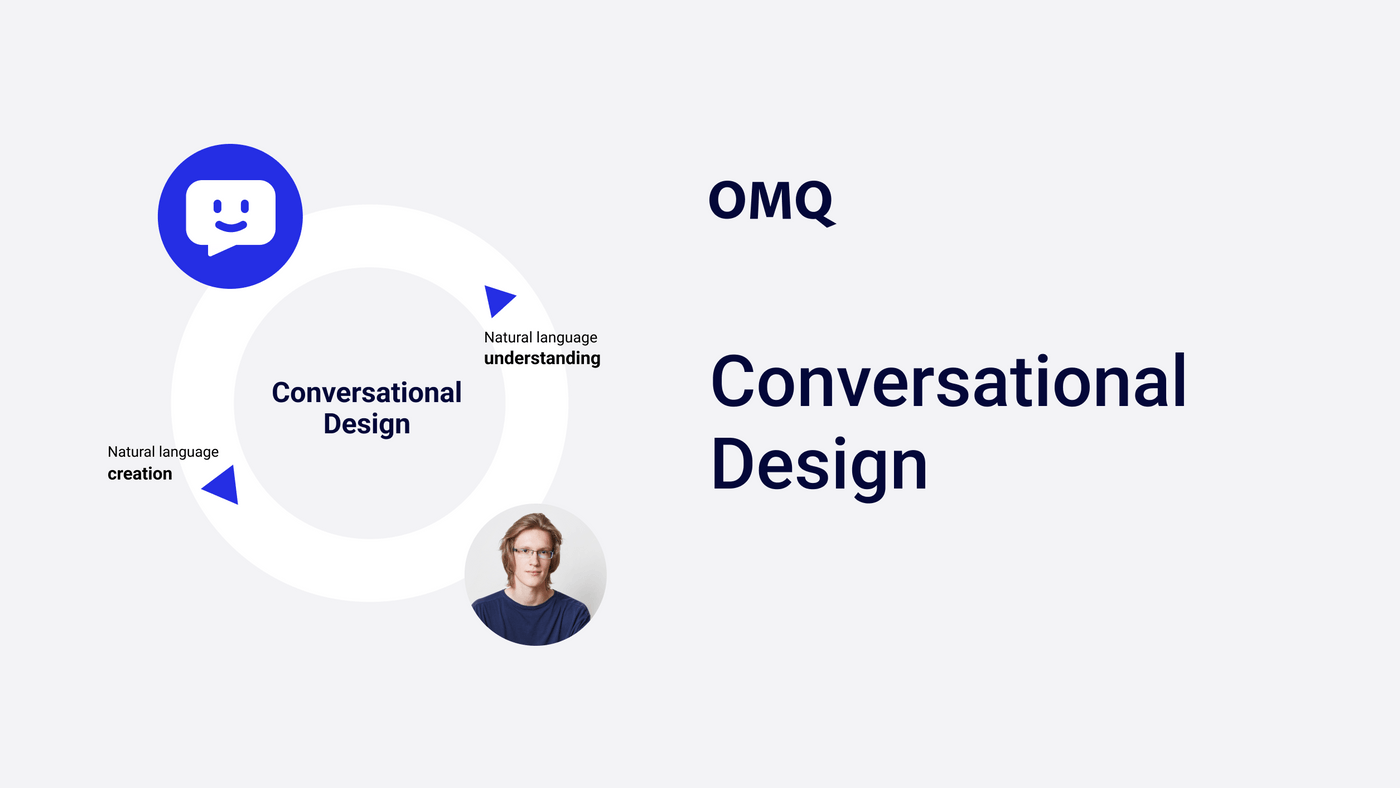
Conversational design is an emerging field in the digital environment that aims to make technology more human-like and intuitive. In this article, we will deal with the basics of conversational design, explain its principles and guidelines, describe the process of creating such a design, and share some best practices.
- 1What is Conversational Design?
- 2What to consider in Conversational Design?
- 3Key elements of a bot conversation
- 4Best Practices in Conversational Design
- 5Additional considerations in Conversational Design
- 6Roles and responsibilities in Conversational Design
- 7Who benefits from these guidelines?
- 8Tools and resources for Conversational Design
What is Conversational Design?
Conversational design is a field in digital design that focuses on making technology more human-like and intuitive. The concept refers to the design of systems (such as chatbots or voice assistants) that communicate with users in a natural, human-like manner.
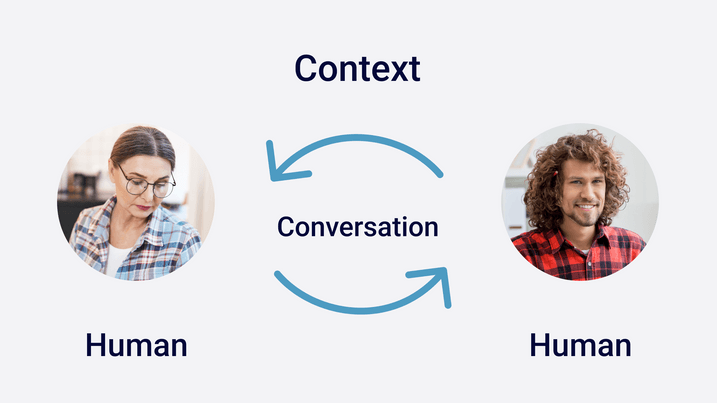
Ideal communication design makes sure that the chatbot interacts like a human, without attempting to be received as one.
This is achieved by modeling the systems according to the principles of human conversation. The goal is to design digital interactions so that they are as natural as possible and provide users with a pleasant and efficient experience. The concept applies to various interfaces, including chatbots, voice assistants, and broader UI and UX designs.
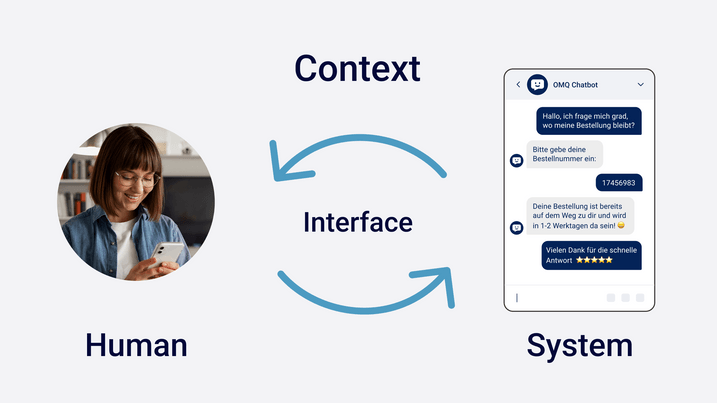
The chatbot acts as an interface between the user and the system.
What to consider in Conversational Design?
Human Interface
Understanding how people interact with each other is crucial for developing intuitive digital interactions. The human interface is at the heart of conversational design.
Conversation Flow
A good conversation flow creates a natural, cooperative dialogue that is goal-oriented, context-aware, quick, and clear. The key is for users to feel like they are talking to another person.
Error Management
Good conversational design should be error-tolerant and able to handle communication failures gracefully. Errors should be seen as opportunities to improve the system and optimize the user experience.
Empathy and User Research
Through user research, we can better understand and meet the needs of users. Empathy allows us to put ourselves in the shoes of users and develop solutions that meet their needs and expectations.
The Process of Conversational Design
Research Phase
The first step in conversational design is research. This is where customer needs are identified. Consequently, the voice, tone, and goals of the company are defined accordingly.
Sample Dialogues
After research, sample dialogues are created that cover various interaction scenarios. This helps to get a feel for the conversation flow and identify potential problems.
Testing Phase
Testing is an essential part of conversational design. Through user testing, areas can be identified where confusion exists or responses seem unnatural.
Detailed Design
After testing the concept, detailed design can begin. Here, designs are scaled for different devices, visual elements are integrated, and error handling mechanisms are developed.
Further Testing Phase
Even after implementation, further testing should be carried out and the system refined. This ensures that the conversational design continues to meet the needs of users and provides a positive user experience.
Key Elements of a Bot Conversation
The key elements of a bot conversation include the menu that guides users through options, user statement (anything typed or spoken by the user), bot response (how the system responds to user input), entity (data points collected from users), and intent (the purpose of users interacting with the bot).
Best Practices in Conversational Design
Best practices in conversational design include…
- creating a cooperative system that actively supports users and facilitates interaction
- understanding and designing around user goals
- adapting interactions to the context and previous interactions of users,
- using simple language and short answers to save time,
- ensuring a balanced exchange.
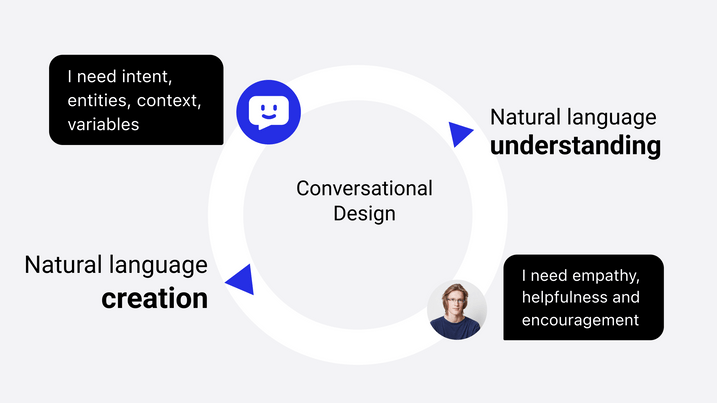
Ideally, communication design is an interplay out of multiple factors, making use of Natural Language Understanding (NLU) in order to create natural language.
Roles and Responsibilities in Conversational Design
Conversational designers are responsible for designing intuitive and natural conversation flows, mediating between user goals and brand, anticipating challenges, and handling communication failures.
They work closely with design and development teams.
Who benefits from these guidelines?
These guidelines benefit UX and technical writers, UX designers, product managers, sales teams, and anyone involved in the creation of conversational systems.
Tools and Resources for Conversational Design
OMQ offers a chatbot that exemplifies conversational design. The OMQ chatbot establishes a consistent voice and tone, ensuring inclusive and accessible design. It understands critical elements such as welcome messages, error handling, and conversation loopbacks. Furthermore, the OMQ chatbot emphasizes continuous improvement through user feedback. This tool is a valuable resource for anyone looking to implement conversational design in their digital interactions.
Conclusion
Conversational design aims to make digital interactions as natural and intuitive as possible by leveraging principles from human communication. This includes understanding user needs, creating cooperative and goal-oriented dialogues, and continuously refining the system based on user feedback.
Various stakeholders, including UX designers, technical writers, and product managers, can use these principles to improve the user experience and build trust.


